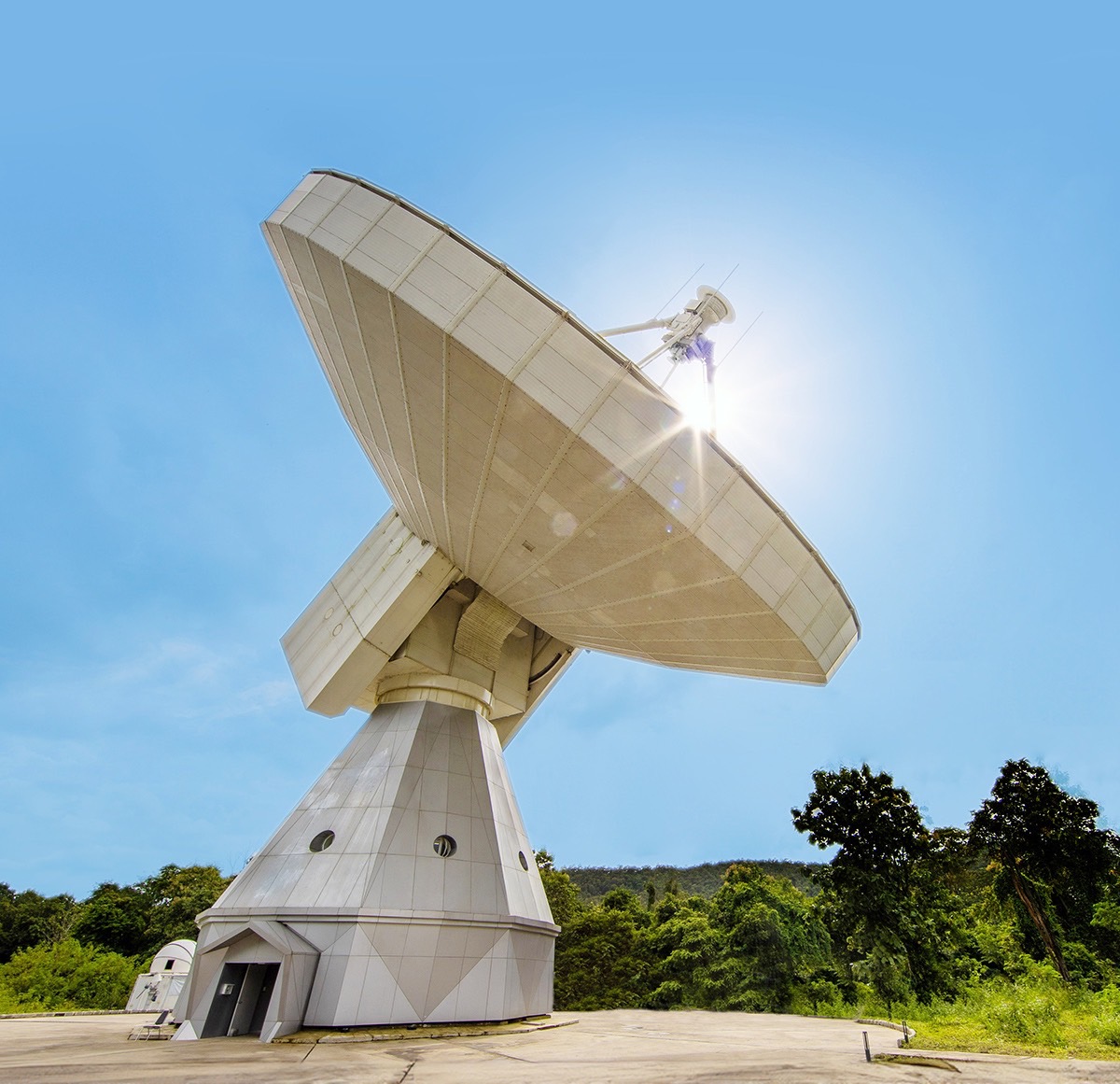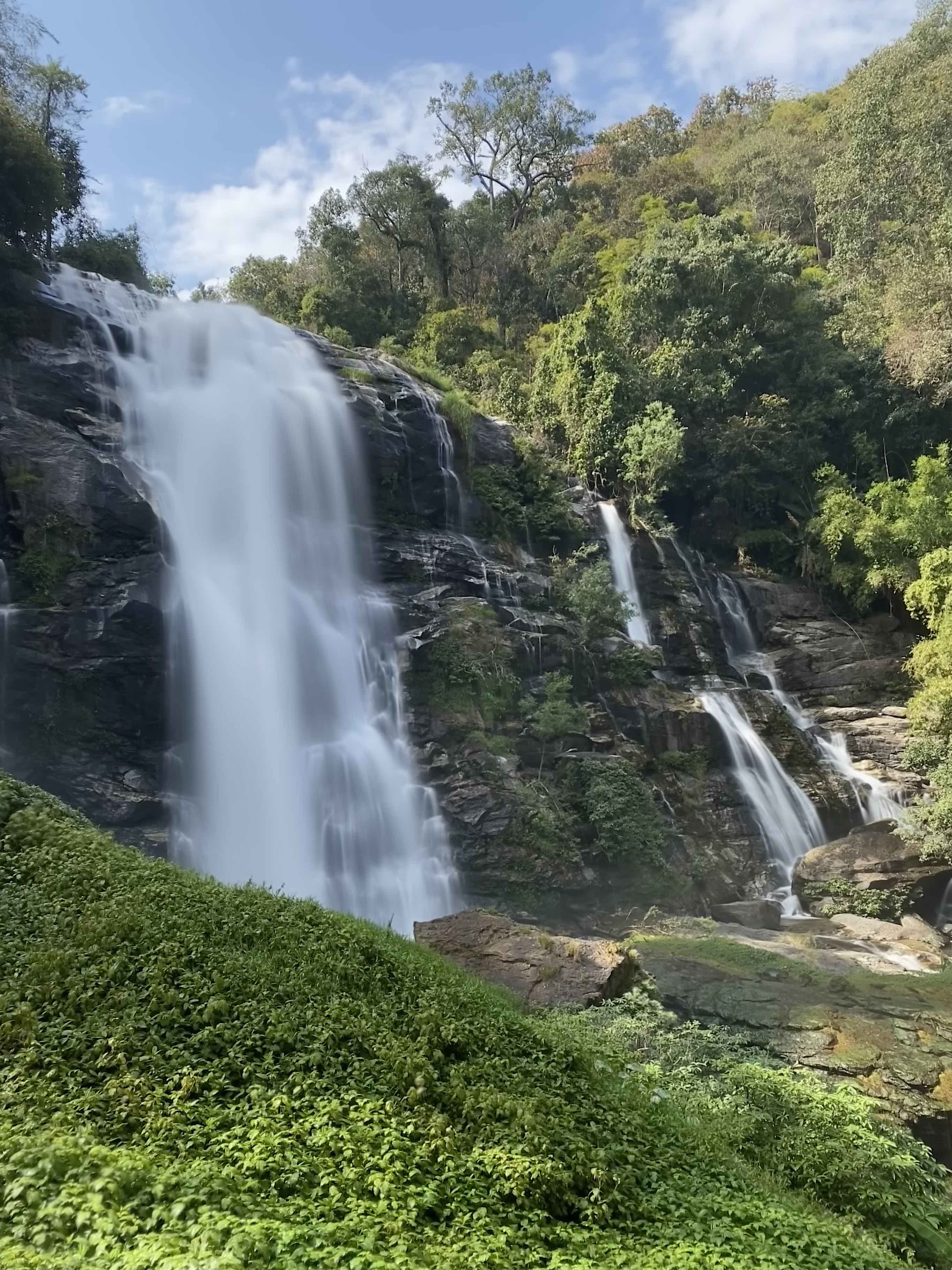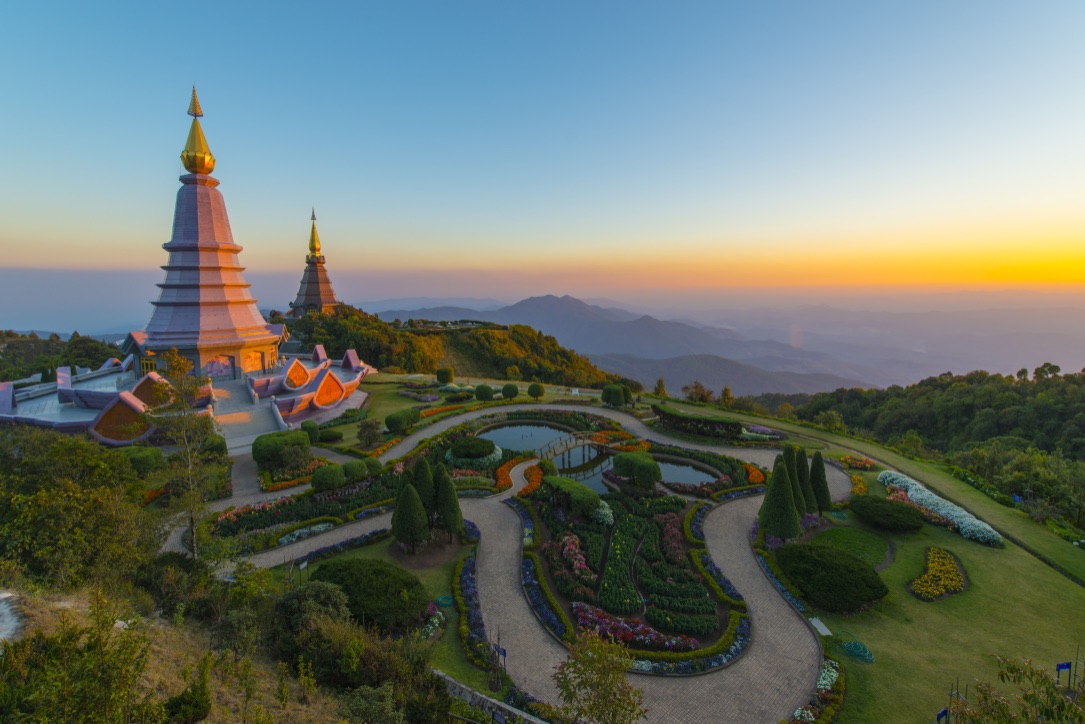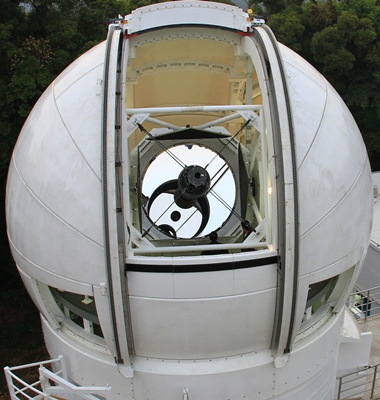The excursion will happen on Wednesday, September 3rd, 2025, which is the third day of the conference. The excursion will allow the participants to visit the Southeast Asia's largest astronomical telescope both in optical and radio frequencies.
Thai National Radio Observatory

Thai National Radio Telescope (TNRT), 40 meters in diameter
In the morning, participants will spend their time visiting NARIT’s largest research infrastructure: the Thai National Radio Observatory (TNRO). The TNRO is located about an hour from Astropark in Huai Hong Khrai Royal Development Study Center. Surrounded by mountains which acted as natural barriers to human interference, this site is where the largest telescope in Southeast Asia is located. Standing at 40 meters across amidst, the TNRO is the newest addition to NARIT’s research infrastructure, only having been fully operational last year. Take an in-depth look at the facilities and behind the scenes of what is required to operate this monstrous piece of equipment.
Thai National Observatory
After the Radio Observatory, participants embark on a 2.5 hours drive to Thailand's highest peak, Doi Inthanon National Park. Doi Inthanon National Park is home to diverse fauna and flora, and giant waterfalls that call this cloud forest home. Participants will make a refreshing stop at Wachirathan Waterfall where the water condensed onto the cloud forest above coalesce through this exposed rock.


Wachirathan waterfal & Twin Pagodas (Note: The pagoda visit is not part of the excursion), Doi Inthanon National Park
Also located on this peak is the largest optical eye in the sky, the Thai National Observatory.

Thai National Telescope (TNT) 2.4 meters
Peaking through the cloud forest at night as the cloud rolls downhill are the two largest optical telescopes in Southeast Asia: the 2.4m and 1.0m telescopes atop the TNO. Participants will get an exclusive tour to this facilities before making their trip down and back to Chiang Mai by the end of day.
***Note that while the excursion is complimentary to all participants, Doi Inthanon is a national park area which comes at an additional entrance fee of 300 THB that will need to be collected in person and in cash at the conference.***
Astropark Facilities:
All K-12AstroAsia2025 participants are granted exclusive tour to NARIT's engineering facilities within the Astropark campus itself. Among these are the four main buildings in which new innovations are being developed to further advancement in astronomy.
Optics and Photonics Laboratory
Astronomy is a unique field of science that tries to understand the universe only through the tiny specks of light. As such, it becomes a main drive at pushing human technology and innovation forward in order to see better, clearer, and obtaining more information. At NARIT, one of the heart of this is within our optics laboratory where new optics systems are being designed to be used with our national observatory, our spacecraft payload, our atmospheric research, or even our public outreach. Witness some of the state-of-the-art systems currently being tested within our clean room such as the adaptive optics (AO) system, telescope design and development, or the first-of-its-kind an evanescent wave coronagraph, a new type of coronagraph never before conceived anywhere in the world.
Advanced Innovation Center
This new addition to the AstroPark is home to the most sophisticated clean room ever. Within this building, Thailand’s first steps towards space exploration begins to take place. This clean room serves as a testing bed and assembly area for Thai Space Consortium (TSC) new probes to be sent around the Earth, or even towards the Moon. Also sharing the same clean room is where sophisticated detectors for Thai National Radio Observatory are being developed and tested before final implementation.
Advanced Mechanical Manufacturing Center
With over 4 robotics observatories around the world, its engineers work tirelessly to develop systems to control, monitor, and maintain our robotics telescopes around the world. In this lab is where the control systems are being developed. Moreover, as the team and its engineering capabilities grew, we now look into not only servicing telescopes made by others, but to develop new systems on our own as well.
Thin-Film Technology Laboratory
Operating the largest mirror in Southeast Asia is no easy task, and maintaining it is even more so. Apart from regular maintenance, TNO requires recoating of its primary 2.4m telescope every few years. Of course, the largest mirror also means the largest mirror coating machine which needed to be developed from scratch. Thanks to the advancement in the sputtering technique develop in this system, however, was Thailand’s ticket into becoming official partner of international project such as Cherenkov Telescope Array Observatory (CTAO), in which the machine that is going to coat all 6,000 mirrors of CTAO now rests in this lab waiting for deployment.
